Last March, thousands of protestors gathered in Columbus Park to rally against the New York government’s plan to build an $2.3 billion mega-jail in Chinatown, as well as three other facilities in Brooklyn, Queens and the Bronx (all predominantly neighbourhoods of colour) as part of a $8.3 billion plan. Rallying cries suggested that the proposed 29-story monolith would harm local businesses that are already struggling with its five-year construction, and demolition would further impact a population suffering from the long-term health affects of both 9/11 and Covid-19. Once finished, the jail, expected to be the tallest in the world, would tower over Chinatown, whose community would be subject to increased police presence as a result.
Rather than investing in America’s capitalist carceral system, the activists believe the city’s money could be better spent on housing, healthcare, education, employment and social services, which would prevent people from being driven to crime in the first place. But New York’s Mayor Eric Adams has made $200 million in cuts to public schools, and is expected to slash funds for parks and libraries, instead.

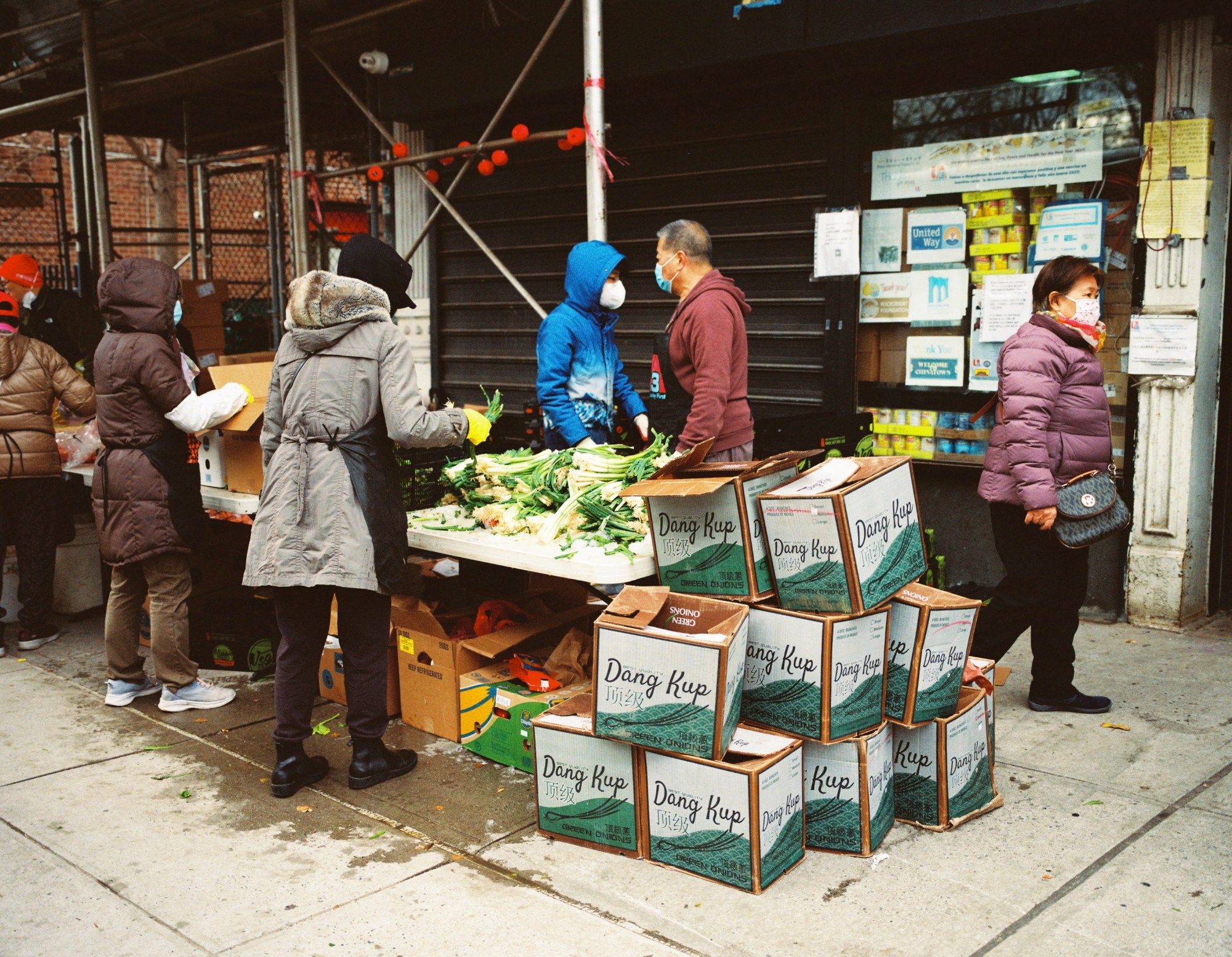
Gabriel Chiu, a Chinese American photographer living in the city, wanted to raise awareness about the community’s activism, as they fight for the preservation of a neighbourhood that has long been a safe haven for the Asian community, especially in a country that has a history of persecuting them. He’s watched as Chinatown has grappled with gentrification: the local Chinese population declining dramatically as an influx of white residents take their place, and an increase in targeted hate crimes and violent attacks on the Asian American community. The building of the jail is likely to make others flee. “Seeing everything that’s been happening with my community is obviously sad,” Gabriel says. “I really admire what these young activists are doing — I think it’s really commendable and hopefully inspiring to other people.” He adds, “taking photos is something that I do and this was my way of helping out the community.”
We spoke to young New Yorkers, who have joined the Chinatown community in pushing back against a government that fills the pockets of the rich, and alienates the poor.
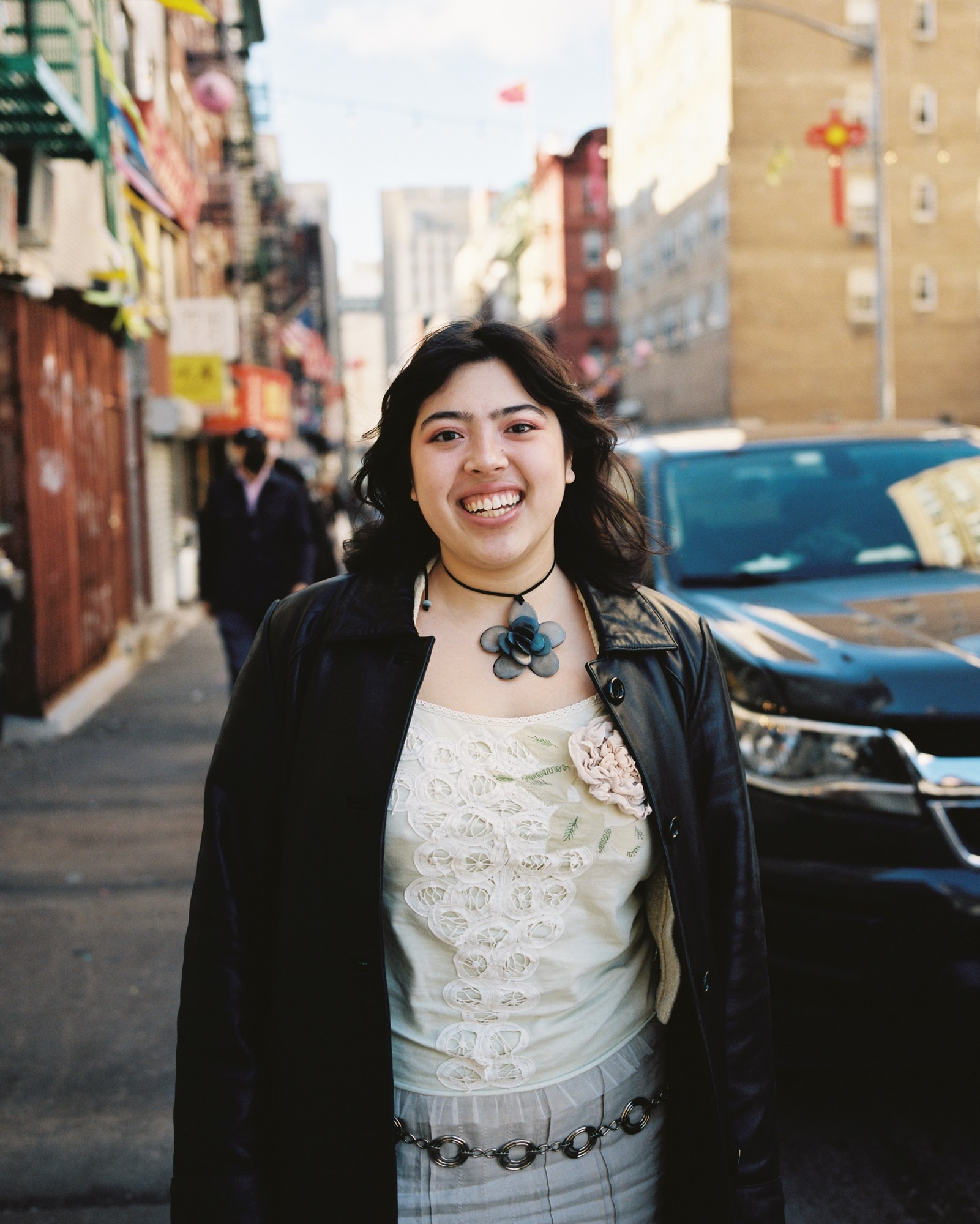
Maia Villalba, 21, Young Lordes Collective
What is the Young Lordes Collective?
A local youth organisation that strives to create a growing and breathing network of underrepresented New Yorkers, through multimedia publications, mutual aid initiatives, food drives, open mic nights, educational discussions and more.
What can you tell me about New York’s Chinatown?
Asian Americans sit in a unique racial position — valorised as high achievers and ostracised as menacing foreigners. Through cycles of institutional othering and belonging, Asian Americans have historically lived in the liminal space between acceptance and exclusion. By extension, Chinatown has ebbed and flowed between a source of fascination or condemnation for outsiders. The Western media has frequently portrayed Chinatown in monolithic and stereotyped ways, either as romanticised enclaves of exotic Asian life, accentuated by their colourful foods and smells, or as dirty alleyways of dangerous, illegal activity. In the 1920s, tours of Chinatown even staged arrests of supposed gangsters and assassins, releasing the actors when there were no longer cameras and tourists in the area. What this shameful history tells us is that it’s not merely an ahistorical accident, but a testament to the ongoing systemic violence by institutions, both material and discursive, of Orientalism.
Tell me about the new mega jail.
As proposed and funded by the state and local members of the elite, the 300-foot jail-scraper will use Centre and Baxter Streets for construction, a densely-populated area with small local businesses, green spaces, and community- and worker-controlled organisations like Chung Pak Day Care Center. We have every reason to believe it will produce irreversible harm towards the most vulnerable among us. In Chinatown, the radical existence of neighbourhood institutions — from ballrooms and performance centres to medical clinics and mom and pop stores — embodies the integral networks of support that do not depend on the licence of the state, but that are freely chosen and nurtured by the community itself. The beating heart of Chinatown depends on the preservation of safe social spaces and material institutions of care. If we fail to act, we will lose the home we know and love.
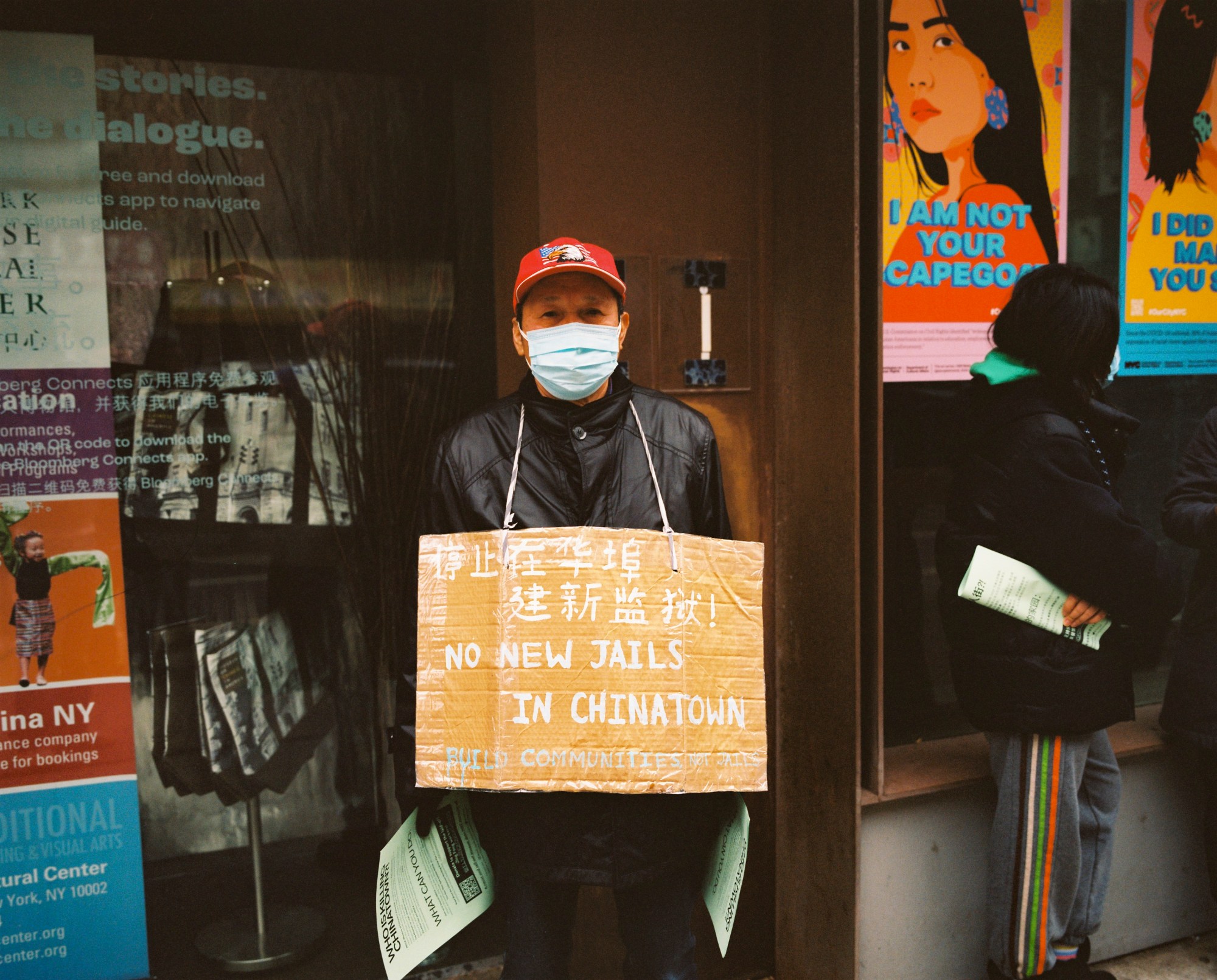
How will the development impact the local community?
The demolition and construction of the mega-jail has wide-reaching implications and effects. As Mayor Eric Adams uses public funds to further mass incarceration, the Chinatown community will lose the social and material basis of their personal autonomy. Local Chinese-owned restaurants, daycare centres and senior homes will inevitably close down and leave hundreds of people out of housing, healthcare, employment and access to essential social services. The increasing police presence in Chinatown will also diminish the quality of life for local residents, as the public safety of poor, working class and elderly people remain at stake.
If this project goes ahead, it will not merely strengthen the tools and resources of the carceral state, but it will put historically marginalised people in chains. The eviction and displacement of local businesses and community members is merely one facet of the problem — mass incarceration is a whole new beast. We are talking about life and death for the most exploited and oppressed among us.
What does the neighbourhood mean to you?
Chinatown is, and always will be, a place for the people. A safe haven and second home for Chinese immigrants; Chinatown is a sacred stomping ground for community-building, political organising and change-making.

Jihye Song, 23, Youth Against Displacement
Tell me about Youth Against Displacement.
Youth Against Displacement is committed to fighting displacement by fighting against racism — the divisions that pit parts of our community against each other — and uniting our whole community. Since April 2021, we have been picketing several times a week against Jonathan Chu, the biggest landlord in Chinatown, and his Museum of the Chinese in America. In March of 2021, Jonathan evicted Jing Fong — the largest restaurant in Chinatown — causing 180 people to lose their jobs and robbing the community of a beloved and culturally significant gathering place. The Jing Fong workers called for a picket against all of Jonathan’s businesses and institutions like MOCA, where he’s co-chair of the board. The picket came to focus especially on MOCA because the museum had negotiated with the city for $35 million in exchange for their assent to the City’s Chinatown jail plan. We demand that Jonathan allow Jing Fong to reopen in its old location and for MOCA to return the $35 million, so that money can be used to actually benefit the community. We also call on the city to stop the Chinatown jail plan, and instead pass community re-zonings, like the Chinatown Working Group plan, to protect our working-class communities from further displacement.
What do you know about the history of the area?
Chinatown has long been an immigrant working class neighbourhood and remains one to this day, despite being subject to immense displacement pressures. One of the major turning points that has driven this displacement is the 2008 East Village rezoning. The East Village — a predominantly white, middle-class neighbourhood — was given a protective re-zoning, but Chinatown and Lower East Side, as well as the Puerto Rican and majority public housing sections of the East Village, were left vulnerable to real estate speculation. All the displacement pressure was pushed onto these communities of colour, where real estate developers eagerly gobbled up waterfront properties and started building luxury towers in the midst of low-income housing.
How will this development impact the local community of Chinatown?
The new jail will further criminalise our community and encourage others to see Chinatown as disposable and easily exploitable. Already our community members are subjected to unhealthy and unsafe working and living conditions, high rents and high costs of living. The jail is the city’s ‘solution’ to these problems — they can go on displacing us and lock us up in jail to get us off the street, all so they can build luxury towers on our homes. This mega-tower of a jail will also set harmful precedents for the construction of more towers in Chinatown — the city will often use the existence of one large building in an area to justify the construction of another — and given the rampant real-estate speculation, these towers will likely be luxury buildings that drive up rents further.
The jail has been described as a physical reminder of anti-Asian hate, do you feel that way?
This jail is a manifestation of the city’s racism and discrimination. The justification for putting the jail in Chinatown was that it would be closer to the neighbourhoods of those who would be locked up, but if the city really locked-up criminals, they’d go after the sweatshop bosses and developers that run rampant across our city and put the jail on Wall Street.
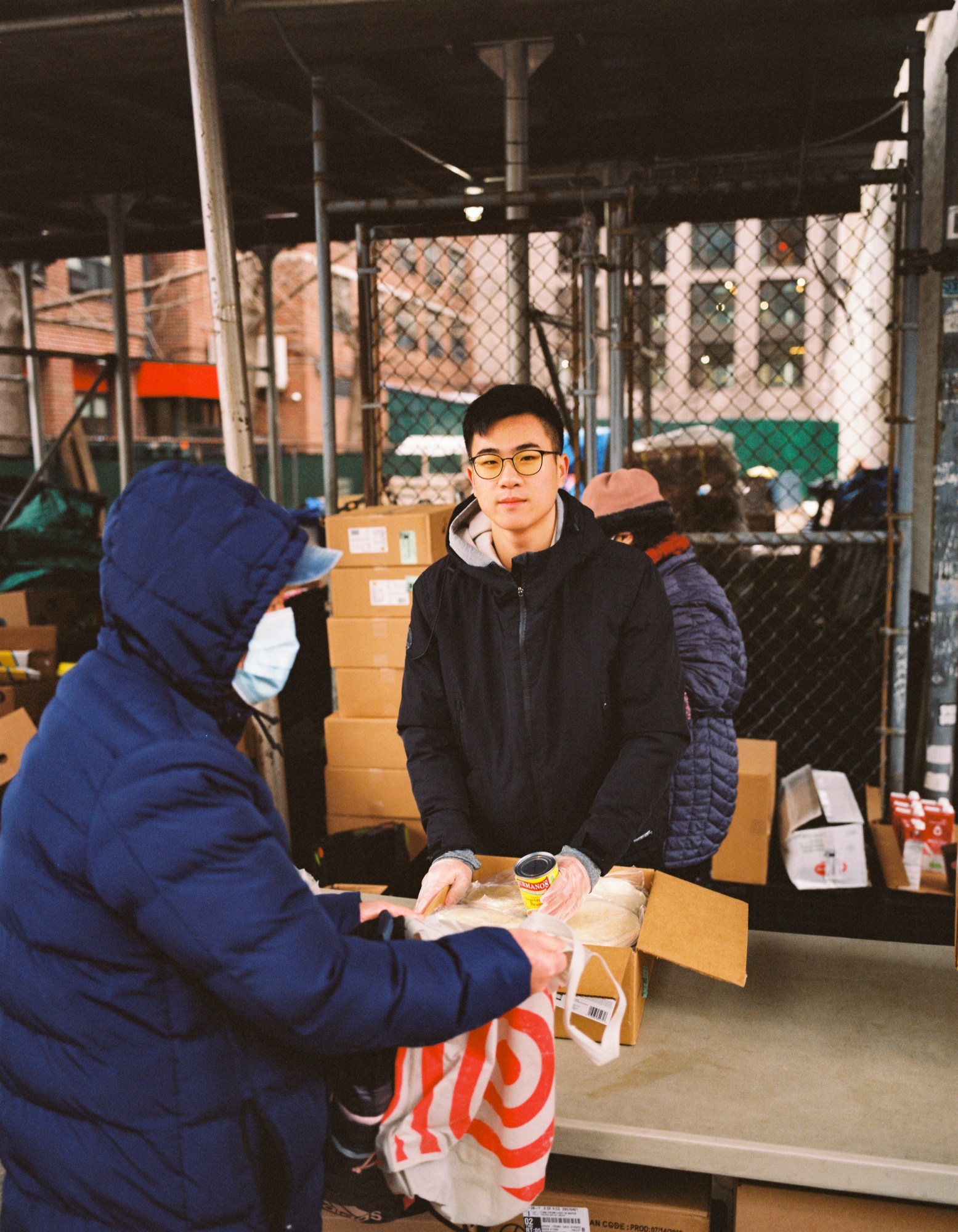
Jacky Lin, 18, UA3 Inc
Tell me what UA3 stands for.
My organisation is all about helping out the community on the Lower East Side. The organisation helps plan events and hands out food to the community. Their mission is to help those in need, mainly through the Monday and Thursday pantry operation. We also give out information about how to vote since we see it as something critical for our community.
Can you describe the feel of Chinatown?
Chinatown is one of the most unique places in the city. The atmosphere and the interactions you see are typical of neighbourhoods that have a rich history of people of colour. It’s unique in that you see people from vastly different backgrounds and jobs sitting in the same restaurant and eating the same food together. You can also see an influx of people from other cultures since there are Korean and Vietnamese restaurants along with Chinese ones.
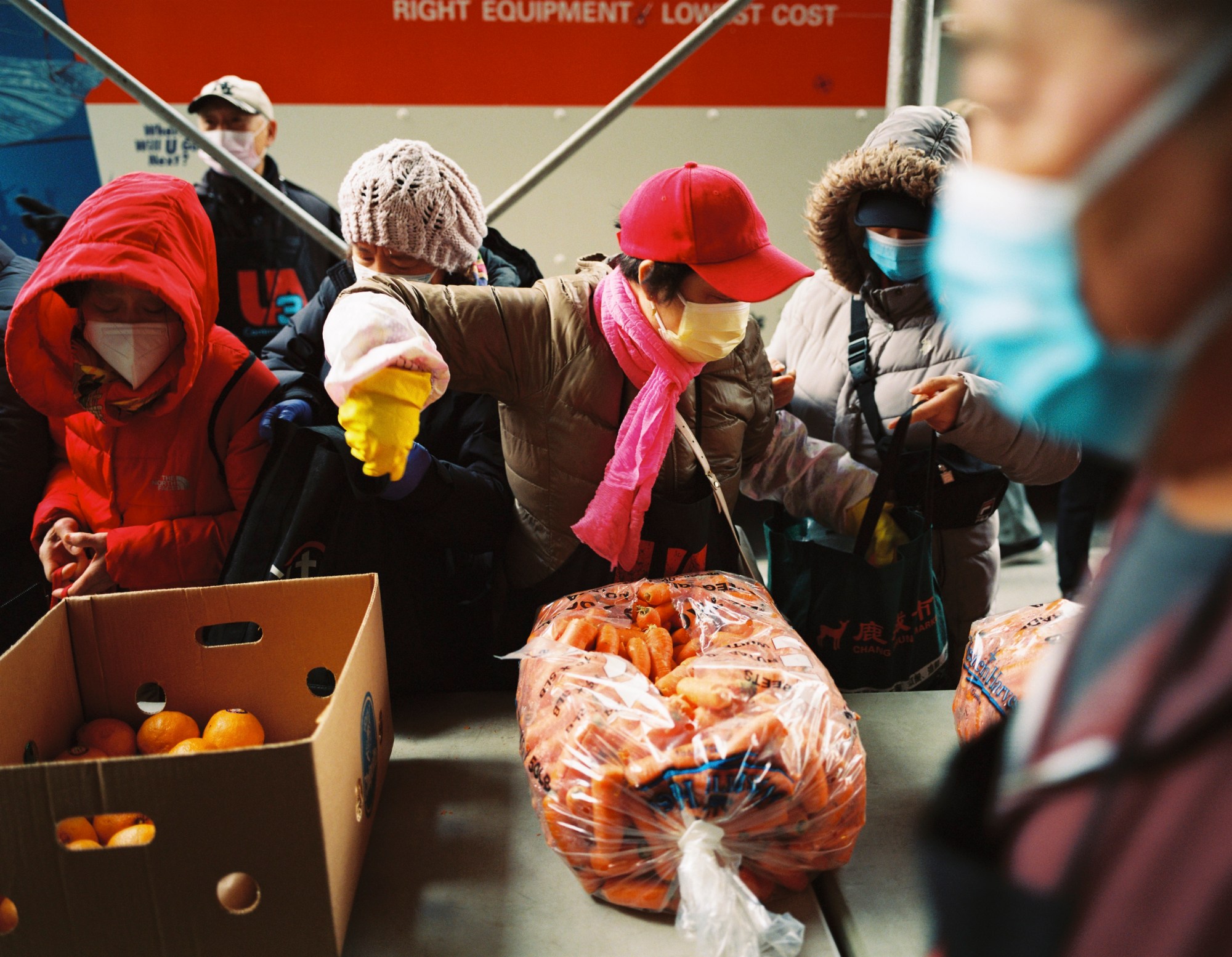
How will the development impact the local community of Chinatown?
It will negatively impact the elderly people living in the housing projects nearby since the health hazard from construction will cause respiratory issues for the elderly. They cannot really move away from where they live and the construction will affect business and foot traffic.
What will be lost if this project goes ahead?
The spark of Chinatown. It will deter people from going near the area and harm the businesses that attract people. Housing will be an issue too, since not too many people are keen to live in an area with a jail.
What does the neighbourhood mean to you?
Chinatown is my second home. I always remember going to get food with my mom and seeing all the hard-working people living in the community. It’s a way for me to explore a bit more of my roots in the city, as well as explore other cultures that reside in Chinatown.
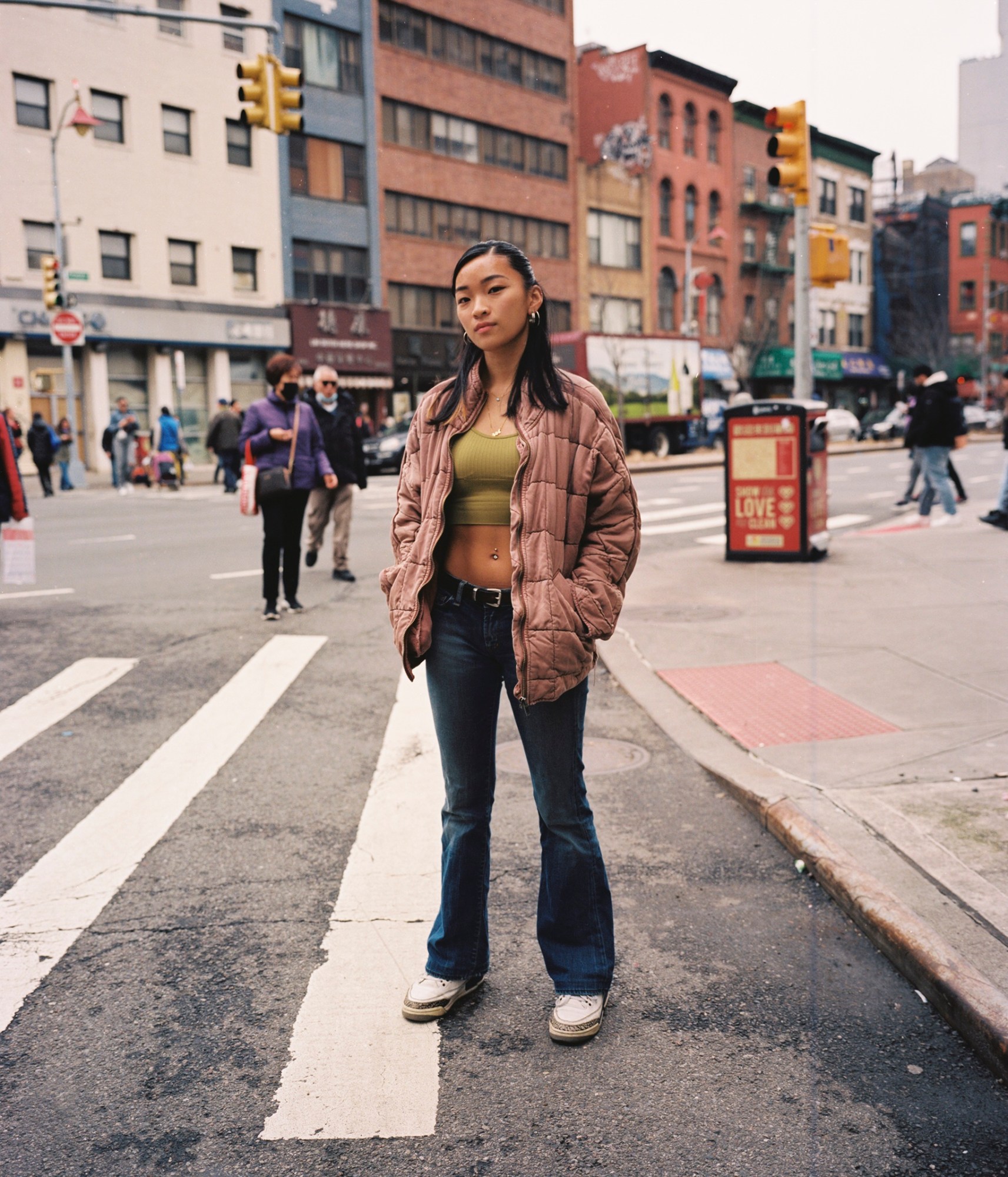
Emma Rehac, 21, Youth Alliance for Housing (YAH)
Tell me about the Youth Alliance for Housing.
I’m the founding director of the Youth Alliance for Housing (YAH). We are a collective of young people who are fighting to radically transform the housing system in America. We envision a world where housing is de-commodified, homelessness does not exist, and every single person is given a safe quality and permanently affordable home. Housing is an intersectional issue that, I believe, is the infrastructure for all these different forms of oppression, and young people really need to be a part of it in order for us to see the changes we want to see.
How did you start working with the Chinatown community?
I’m Asian American. I’m not from Chinatown. I’m not really ethnically, culturally Chinese; I was adopted from China, but before YAH existed, I had many deep relationships with different community members and organisations in Chinatown. When we meet in person, the spaces we use are local organisations. We are in deep solidarity with community leaders. It’s one of those really historic neighbourhoods where gentrification has been running rampant, where the bedrock and fabric of the city is being uprooted. Chinatown is a place and neighbourhood that has still not fully recovered from 9/11, the ongoing construction of the different bridges that connect to it, and then the deep impact of Covid-19 and the rise in Asian American hate.
What are some of the issues that are going to stem from the building of this jail?
At YAH, we’re also abolitionist organisers. We believe that the connection between abolition of the prison industrial complex and the transformation of the housing situation are really interconnected. Chinatown already has three jails. This plan wants to demolish two of the current jails and create a new jail that would be the tallest jail in the world. We should build different, more humane jails, but there’s no such thing as a humane jail; it’s a deep place of violence in our society. It’s not only the construction of the jail that will have a huge impact on businesses and housing, on the physical health and wellness of the local community, it’s also a perpetuation of carceral practices in Chinatown that have been happening for way too long.
The project is due to cost $8.3 billion, how do you think that money could be better spent?
Since the start of the pandemic New York’s public schools have been [heavily] defunded. We’re also the largest and most segregated public schools in the country, so I think that this is very clear on what the intentions are of our local government and a lot of people in power.
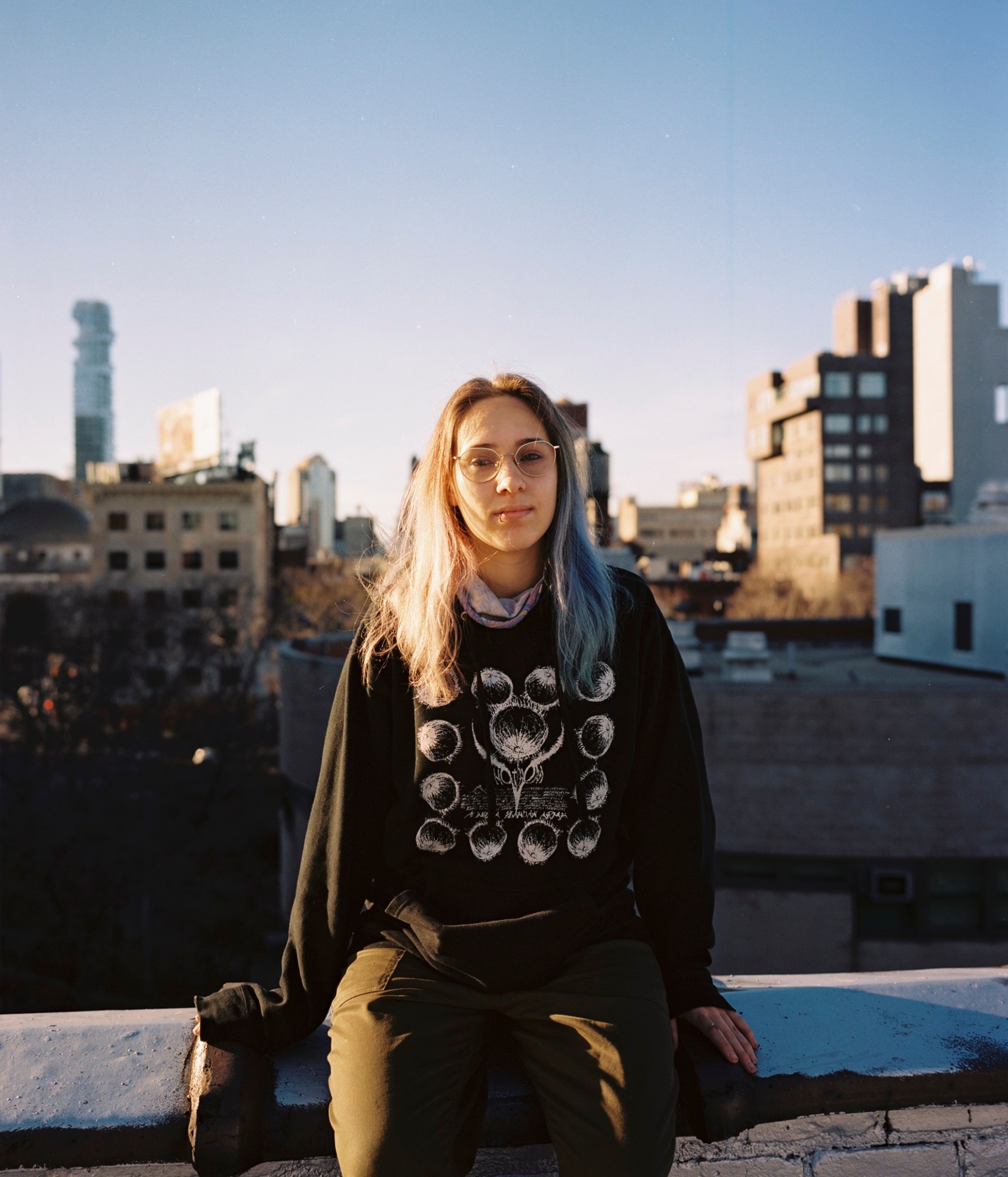
Levka A. Starkova, 18, Project Reach CPC
What does Project Reach CPC stand for?
We are a youth and adult run non-profit that focuses on youth empowerment and anti-discrimination, as well as providing a safe space to uplift marginalised voices.
How will the development impact the local community of Chinatown?
I’m worried that the mega-jail will bring about an increase in police activity in the neighbourhood, and, with how much police racially profile, it could cause a spike in community members getting arrested. Many locals distrust police in general and tensions could rise. Additionally, this could cause a lot of businesses in the neighbourhood to shut down.
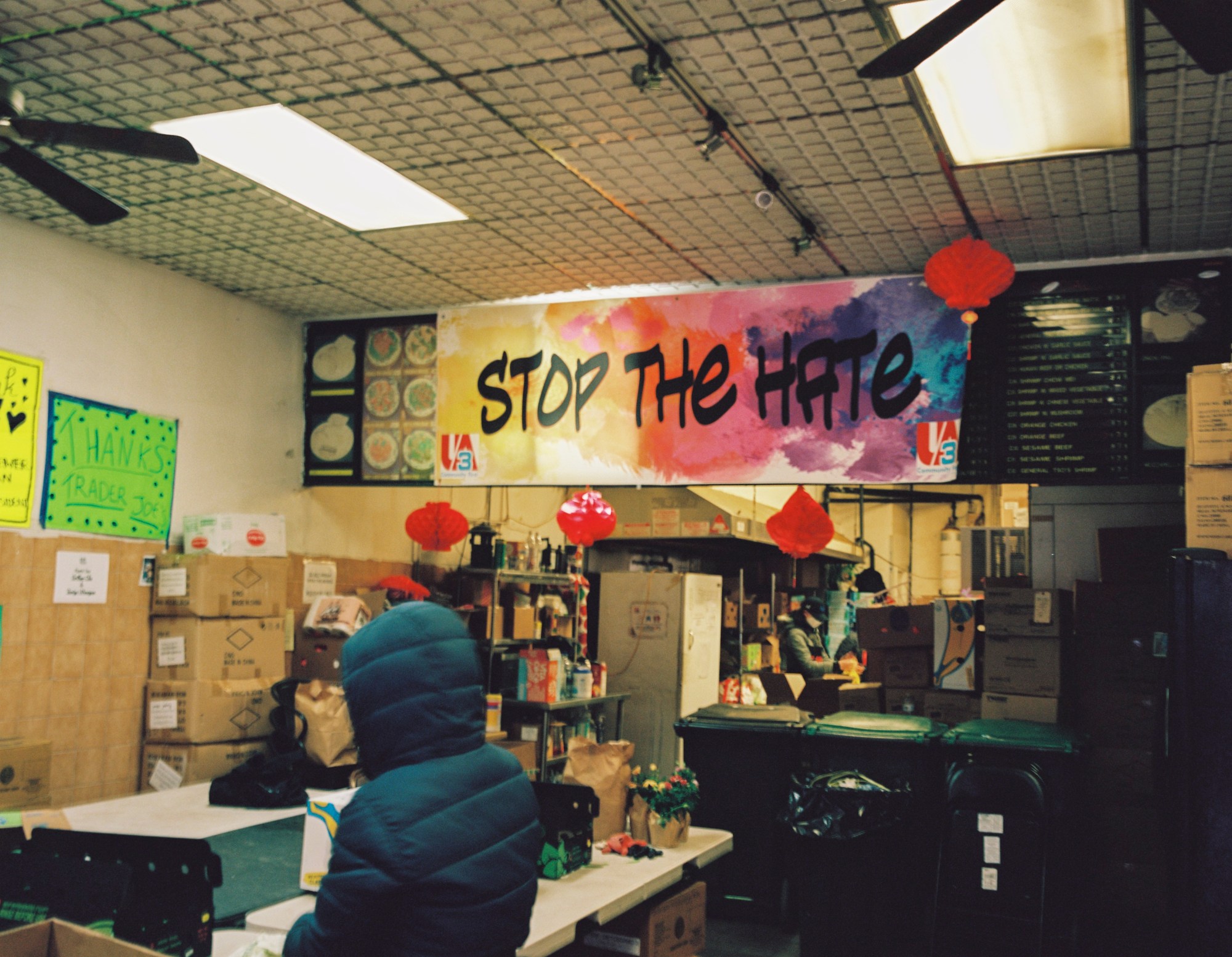
How do you think the city’s money could be better spent?
There are countless ways to spend this money better. This money could be reinvested into schools, city infrastructure (roads, piping, etc), the MTA (fixing the trains), welfare (making the [NYC Housing Authority] buildings better), education, subsidising small businesses, etc. There are literally hundreds of ways to use this money that would be better than constructing a mega jail.
What does the neighbourhood mean to you?
To me, Chinatown is a second home. Before I joined Project Reach I used to come here with my mother to shop for groceries all the time. I know Chinatown like the back of my hand. After I joined Reach, I started viewing Chinatown as a safe haven for myself; I got to know some of the shop owners and other members of the community.
Credits
Photography Gabriel Chiu
Co-production Like June



